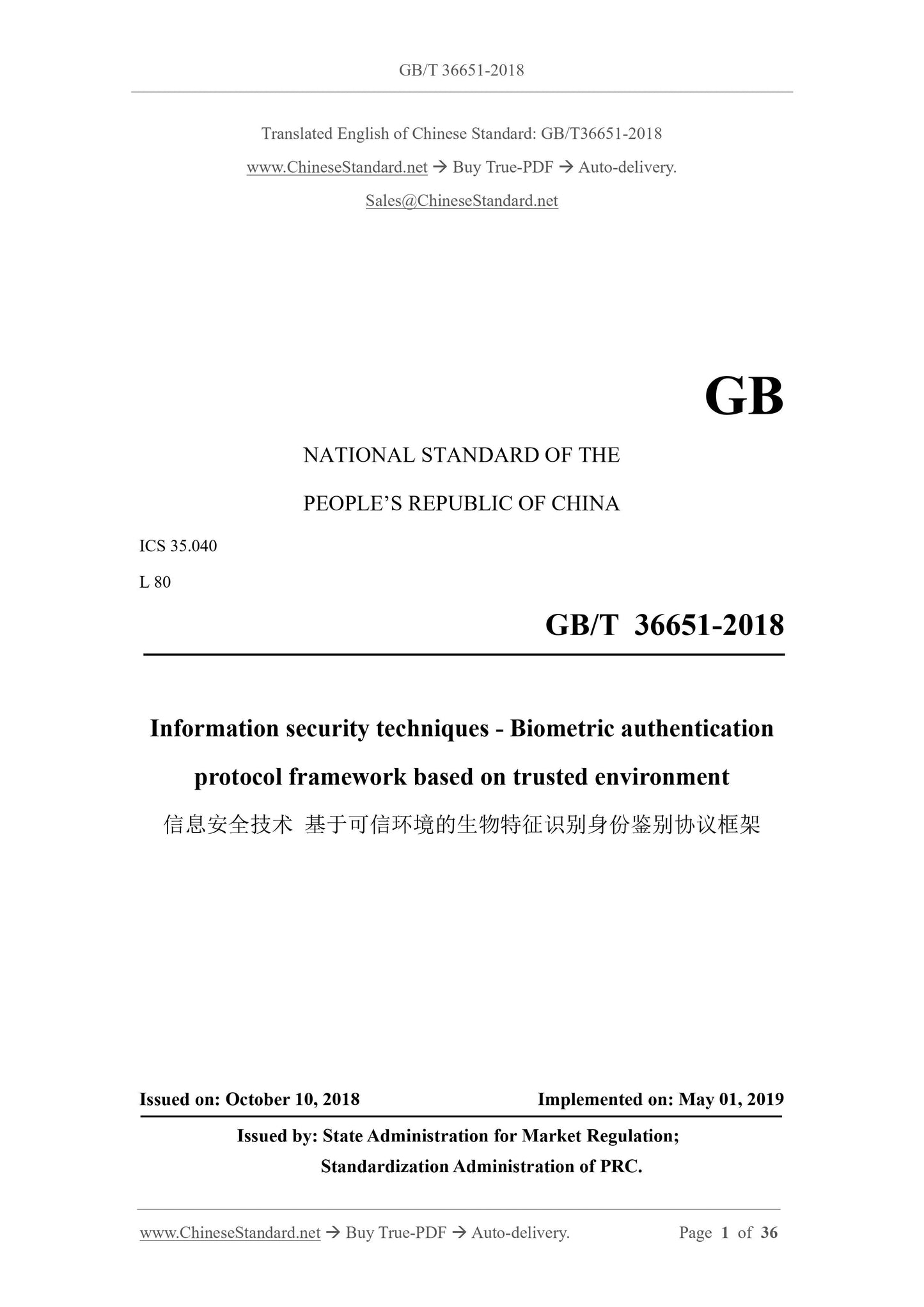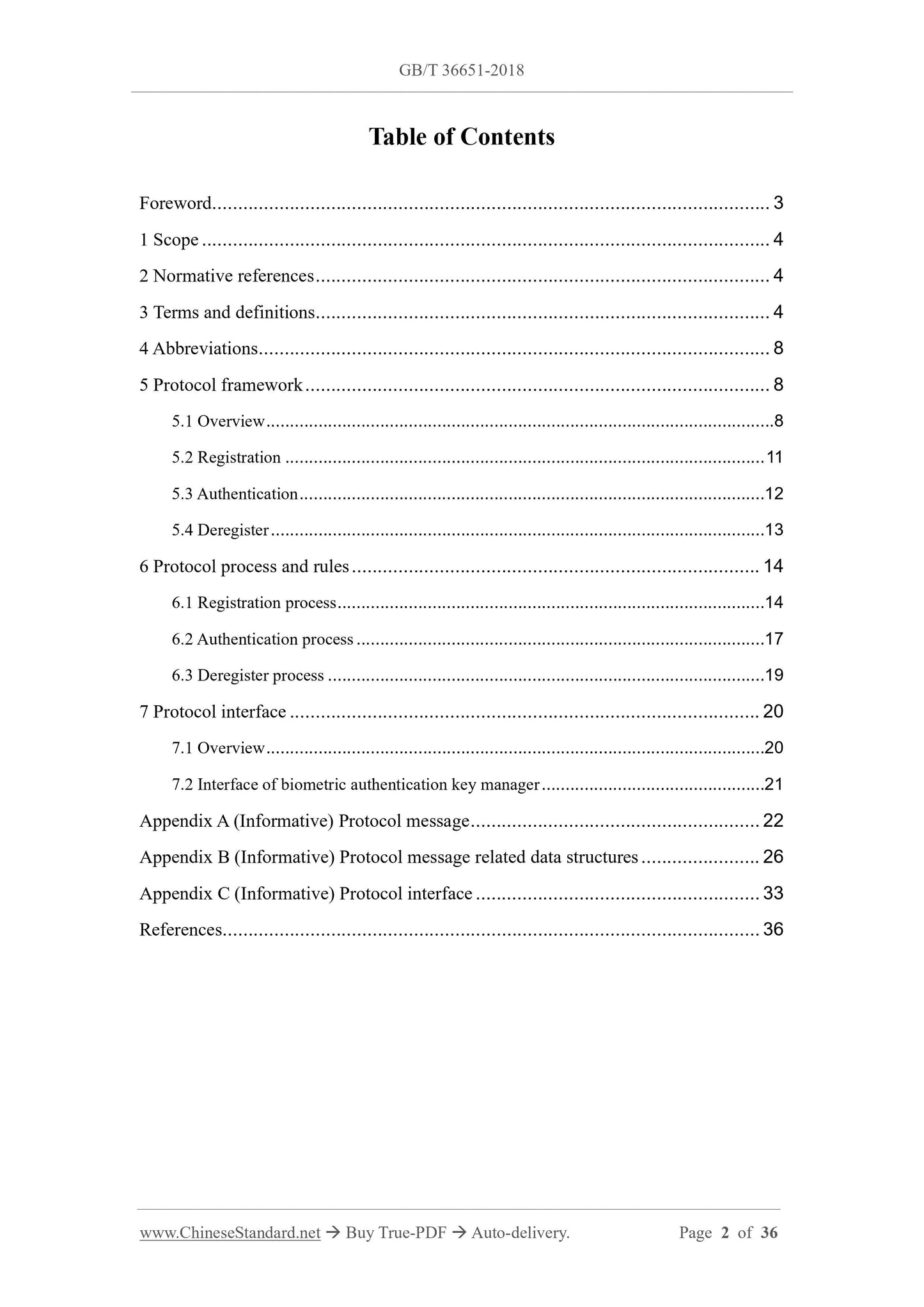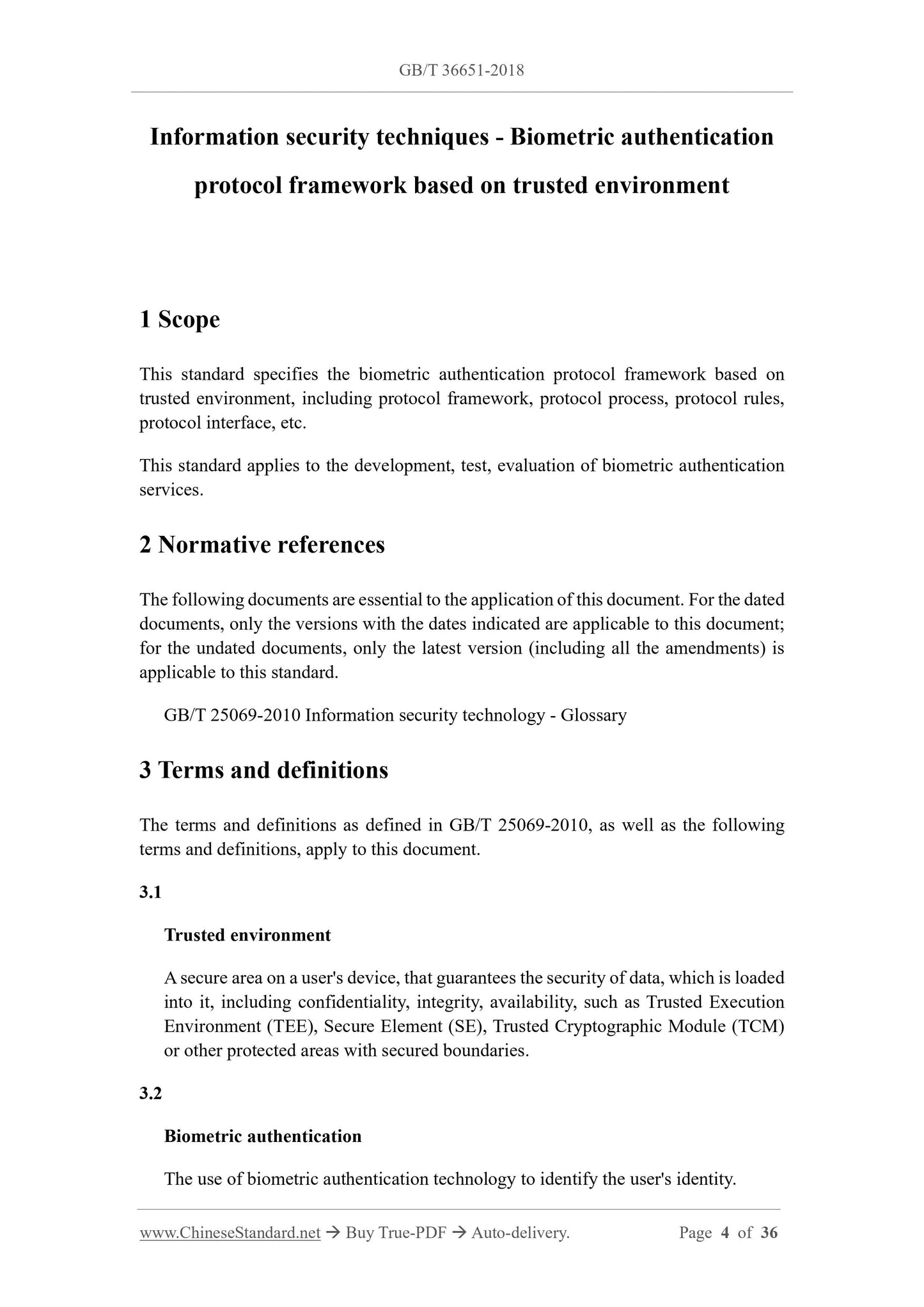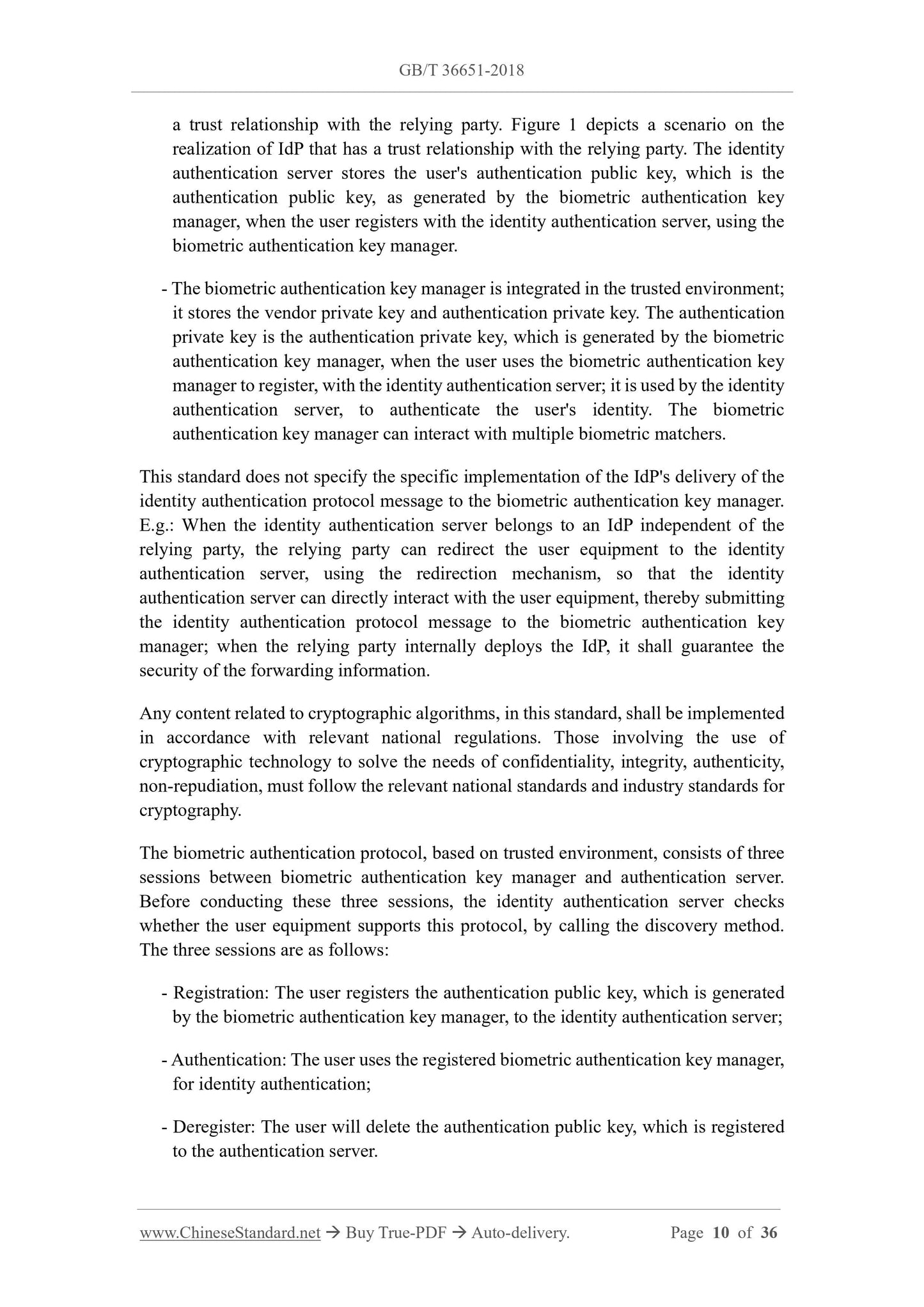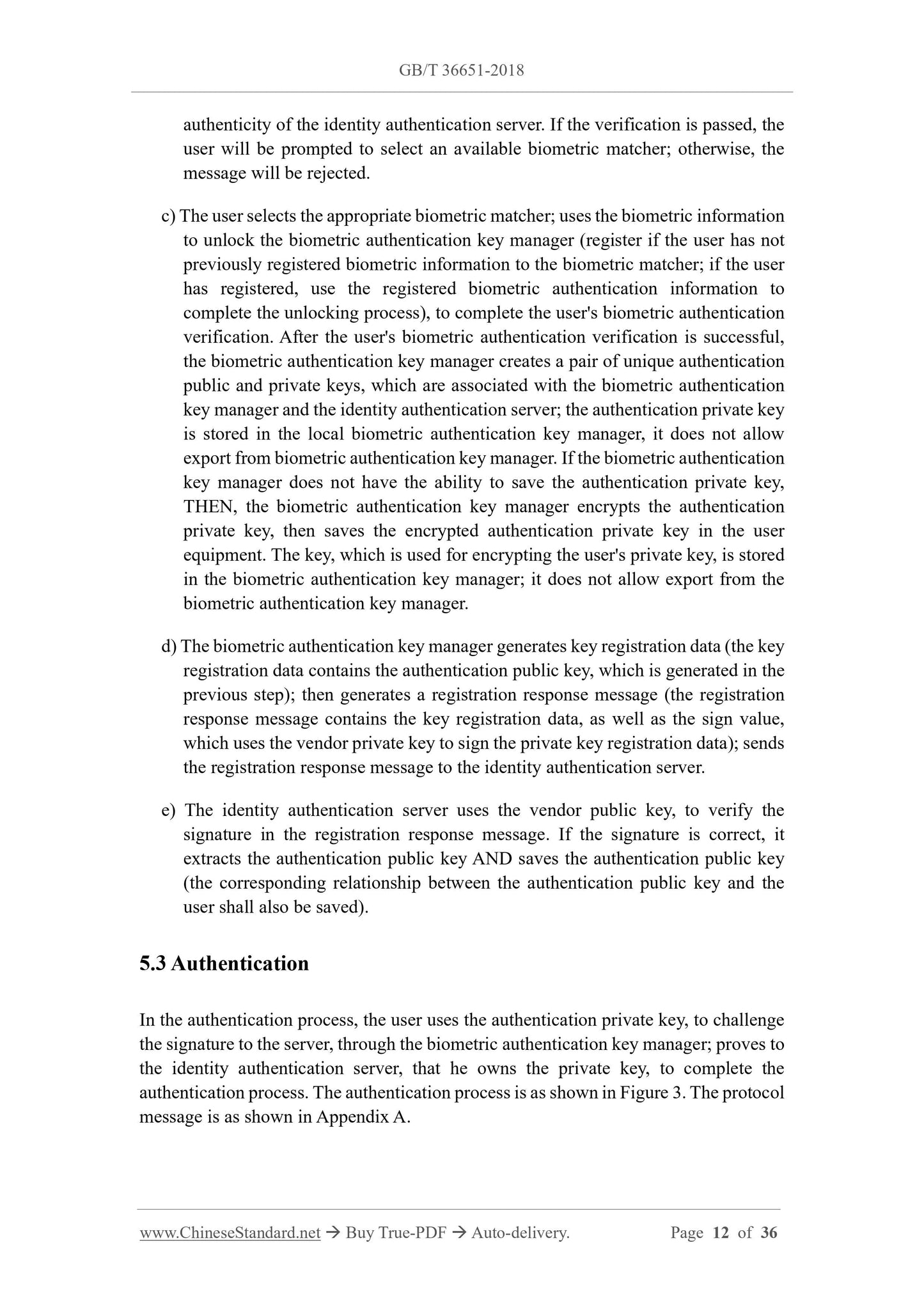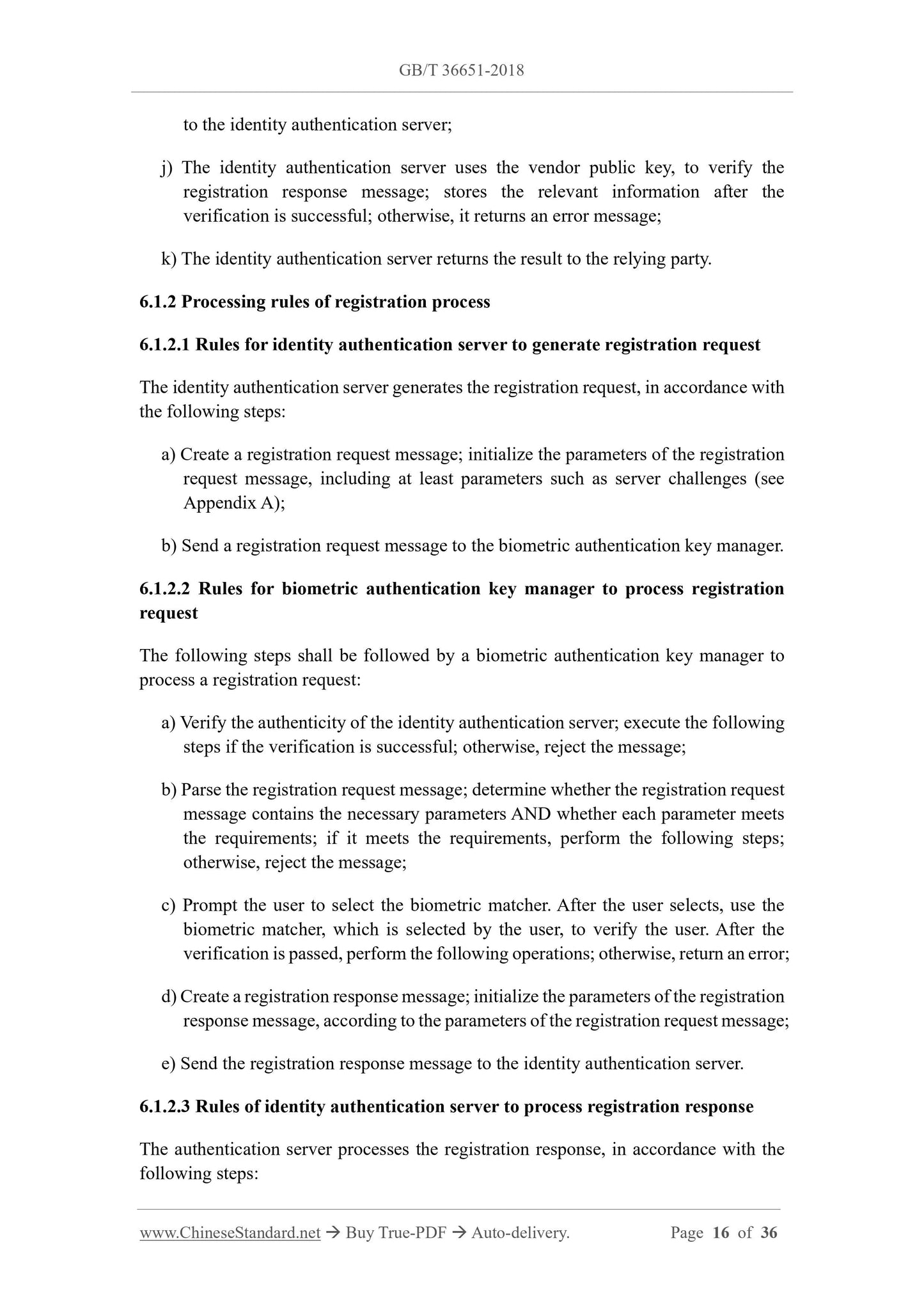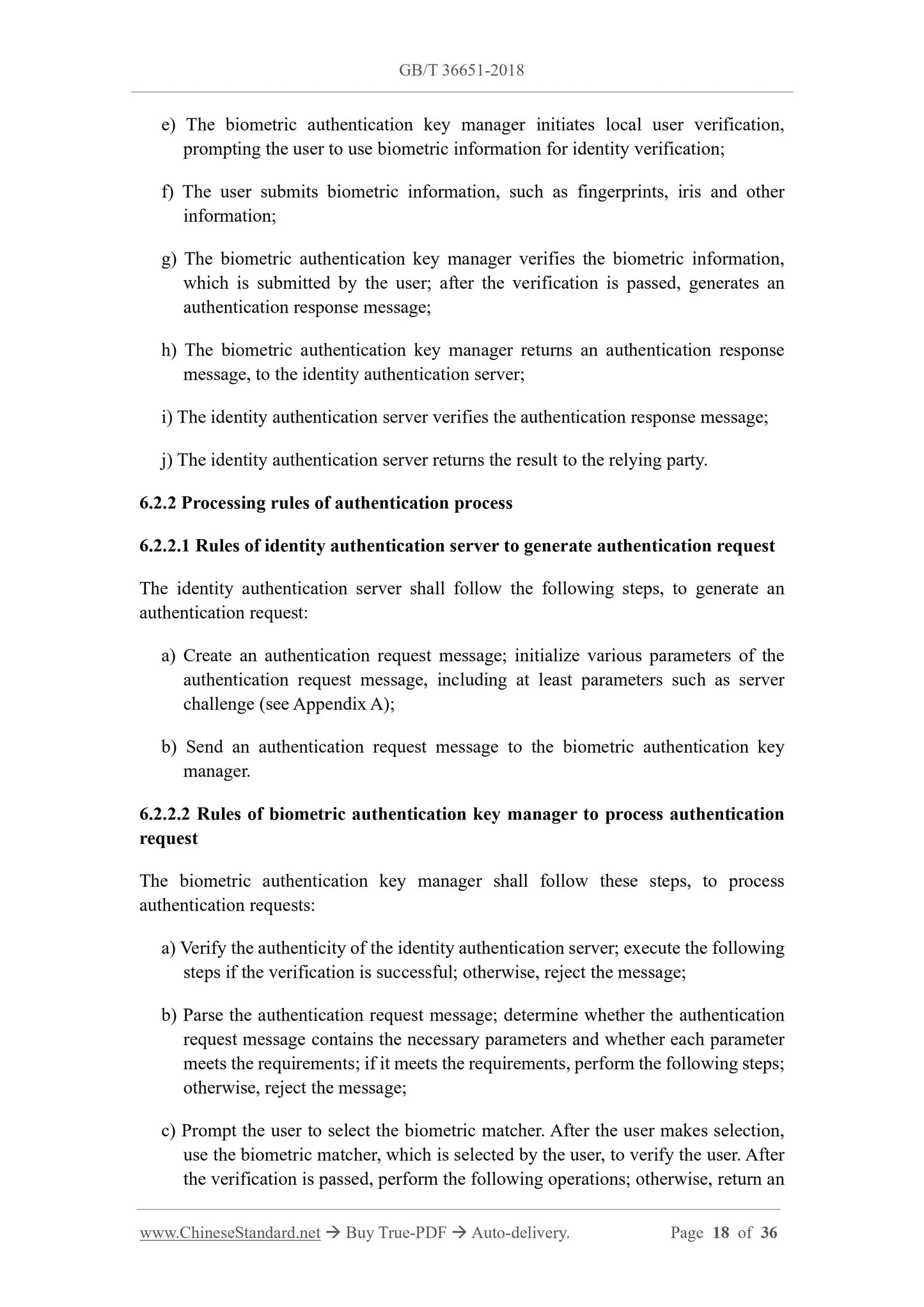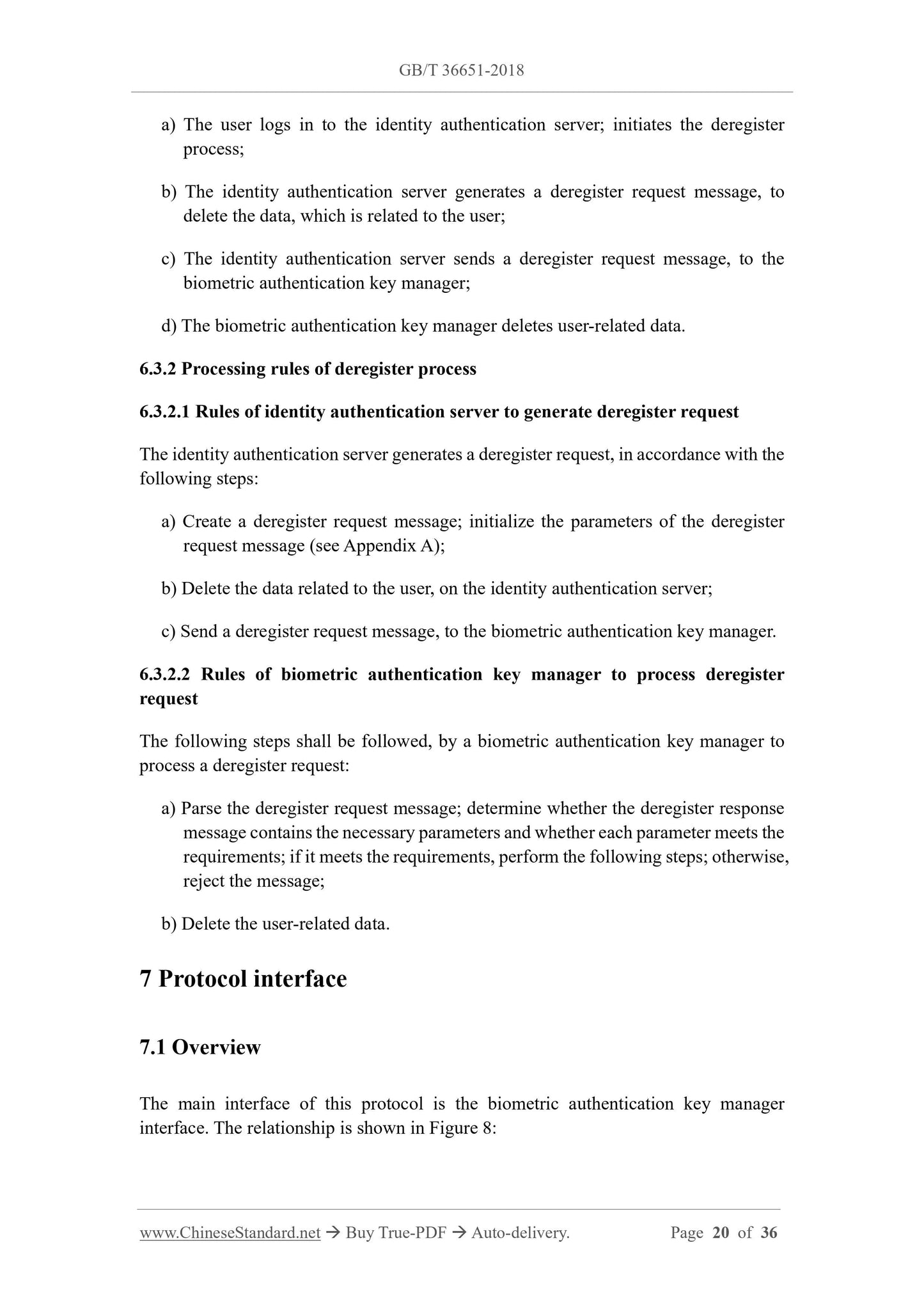1
/
of
8
www.ChineseStandard.us -- Field Test Asia Pte. Ltd.
GB/T 36651-2018 English PDF (GB/T36651-2018)
GB/T 36651-2018 English PDF (GB/T36651-2018)
Regular price
$380.00
Regular price
Sale price
$380.00
Unit price
/
per
Shipping calculated at checkout.
Couldn't load pickup availability
GB/T 36651-2018: Information security techniques - Biometric authentication protocol framework based on trusted environment
Delivery: 9 seconds. Download (and Email) true-PDF + Invoice.Get Quotation: Click GB/T 36651-2018 (Self-service in 1-minute)
Newer / historical versions: GB/T 36651-2018
Preview True-PDF
Scope
This standard specifies the biometric authentication protocol framework based ontrusted environment, including protocol framework, protocol process, protocol rules,
protocol interface, etc.
This standard applies to the development, test, evaluation of biometric authentication
services.
Basic Data
| Standard ID | GB/T 36651-2018 (GB/T36651-2018) |
| Description (Translated English) | Information security techniques - Biometric authentication protocol framework based on trusted environment |
| Sector / Industry | National Standard (Recommended) |
| Classification of Chinese Standard | L80 |
| Classification of International Standard | 35.040 |
| Word Count Estimation | 26,215 |
| Date of Issue | 2018-10-10 |
| Date of Implementation | 2019-05-01 |
| Issuing agency(ies) | State Administration for Market Regulation, China National Standardization Administration |
Share
